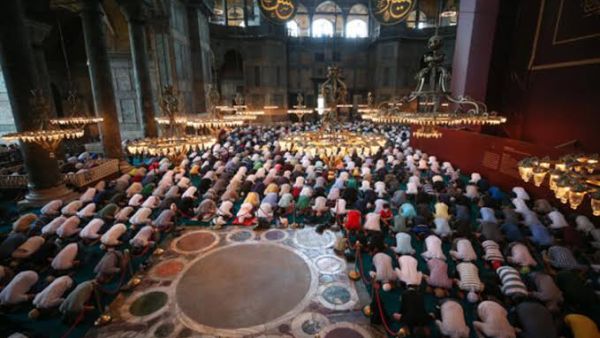A square-shaped area in the Hagia Sophia Grand Mosque, where the emperors were coronated, was not carpeted to respect historical legacy, Istanbul's top culture and tourism official said on Saturday.
On Friday, the first prayers since its official reconversion into a mosque was held in the Hagia Sophia Grand Mosque.
Carpets specially prepared for the mosque were laid on the areas exempted from restoration works.
An area behind the raised platform in the mosque where muezzin carries out his duties to call to prayer was seen left empty.
“The empty area was the coronation place of emperors. Therefore, it was left empty,” Coskun Yilmaz, Istanbul's top culture and tourism official, told Anadolu Agency.
Hagia Sophia served as a church for 916 years until the conquest of Istanbul, and a mosque from 1453 to 1934 -- nearly 500 years -- and most recently as a museum for 86 years.
One of the most visited historic buildings in Turkey by domestic and international tourists, Hagia Sophia was added to the UNESCO World Heritage List in 1985, during its time as a museum.
On July 10, a Turkish court annulled a 1934 Cabinet decree that had turned Hagia Sophia into a museum, paving the way for its use again as a mosque after an 86-year hiatus.
This article has been adapted from its original source.








